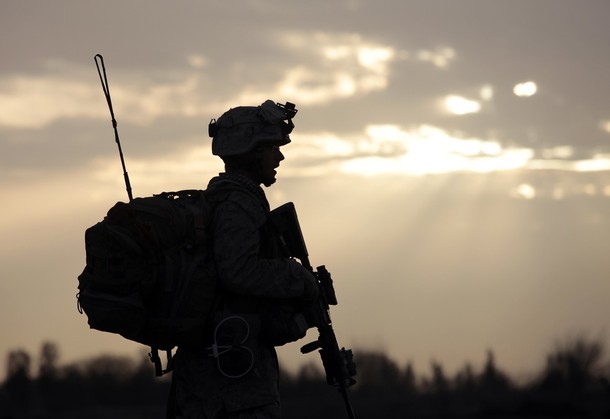
From Eric Schmitt, Helene Cooper and David Sanger, the New York Times: American military officials are building a case to minimize the planned withdrawal of some troops from Afghanistan starting next summer, in an effort to counter growing pressure on President Obama from inside his own party to begin winding the war down quickly. …
General Petraeus, who has kept a low profile for the past six weeks while conducting a countrywide assessment, is expected to amplify the message during the media offensive he will begin on Sunday, when he is to appear on NBC’s “Meet the Press.” He is expected to underscore that the last of the 30,000 additional troops Mr. Obama ordered to Afghanistan last December will not arrive until later this month, and that the counterinsurgency strategy has not been given enough time to succeed.
Administration officials said they are hopeful that General Petraeus’s stature in Congress and in allied capitals in Europe and the Middle East will buy him time to try to make the counterinsurgency strategy he designed — and carried out in Iraq — work in Afghanistan. …
For now, White House officials say that they are sticking to their plan for a conditions-based withdrawal starting in July 2011, and that in areas where counterinsurgency operations just began this year, their plan still calls for giving American forces roughly two years to show results and transfer control to Afghan security forces.
Mr. Obama will make a formal assessment of progress in Afghanistan in December. But administration officials said they did not expect major changes in strategy in Afghanistan to emerge from the review, suggesting that the White House would not move swiftly to resolve the tension between the military’s pleas for patience and the demands from Democrats for substantial troop withdrawals starting next summer. …
At the core of the timetables, they say, is what White House officials call the “two-year rule.” During the review of Afghanistan and Pakistan strategy, Mr. Gates made the argument, according to one participant in the White House Situation Room discussions, that “in any particular location you should be able to clear, build, hold and transfer” to the Afghan forces within two years. Military officials said two years was roughly how it took to make headway in difficult places, once troops were in place. …
The two-year clock, officials say, started in June 2009 when the first additional forces, more than 20,000 troops long requested by American commanders, arrived in Afghanistan. Those troops will have been in place for two years by next summer, the deadline for the beginning of the withdrawal under Mr. Obama’s plan. In areas where operations began this year — like Marja, where results have been disappointing, and Kandahar, where American Special Operations forces are now conducting night raids to diminish the mid-ranks of the Taliban — the two-year clock started later, and operations could continue well into 2012.
Democrats in Congress are in no mood to hear about two-year clocks. In a vote last month to continue financing the war, those in the House were deeply split, with 102 — more than a third of the caucus — voting against the measure. (photo: Reuters)
Image: reuters%208%2011%2010%20marine.jpg
